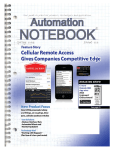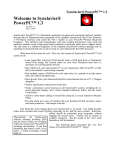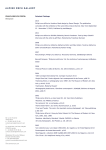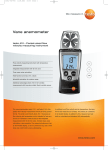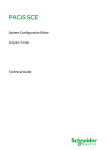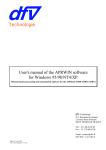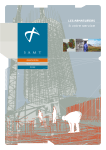Download User Manual of AILES beamline
Transcript
User Manual of AILES beamline Version n°3 Update the 13th of September 2011 Summary Summary .................................................................................................................................... 2 Foreword .................................................................................................................................... 3 1 About the beamline ............................................................................................................... 4 a) Experiments on the beamline ............................................................................................. 4 b) Main features of the beamline............................................................................................ 5 c) AILES beamline in the Synchrotron .................................................................................. 6 d) AILES Laboratory ............................................................................................................. 7 e) Infrastructure ...................................................................................................................... 8 2 Safety rules ........................................................................................................................... 13 a) Training ............................................................................................................................ 13 b) Safety Approval Sheet (SAS) .......................................................................................... 13 c) In case of incident ............................................................................................................ 14 d) Waste................................................................................................................................ 14 3 Using detectors..................................................................................................................... 16 a) Detectors MCT and InSb: ................................................................................................ 16 b) Bolometers at 4.2°K: ........................................................................................................ 16 c) Pumped bolometers at 1.6K: ............................................................................................ 18 4 Spectrometer IFS 125 (room CX2) .................................................................................... 19 a) Sample sets available on the spectrometer IFS 125 HR .................................................. 20 b) Detectors available ........................................................................................................... 21 (for the filling refers to chapter3) ......................................................................................... 21 c) Evacuating scheme of the spectrometer IFS 125 ............................................................. 22 d) Using the spectrometer IFS 125 HR ................................................................................ 23 5 Spectrometer IFS 125 MR (room CX1) ............................................................................ 40 a) Sample sets available on the IFS 125 MR ....................................................................... 40 c) Evacuating scheme of the spectrometer IFS 125 MR ...................................................... 42 d) Using spectrometer IFS 125 MR ..................................................................................... 43 ANNEXE (Manual of Global Screen and Opus) User Manual of AILES beamline 2 Foreword This document is a manual for the users of the beamline AILES (Advanced Infrared Line Exploited for Spectroscopy) of the synchroton SOLEIL. It contains information useful to work with this beamline. The objective is to facilitate the autonomy of the user. Team beamline : - - - - - - Pascale ROY (Researcher, AILES beamline manager) - 9657 - 9683 - 9661 - 9742 - 9741 - 9666 Jean-Blaise BRUBACH (Researcher, beamline scientist SOLEIL) Mylène CHAPUIS (Assistant Engineer SOLEIL) Olivier PIRALI (Researcher CNRS - ISMO) Laurent MANCERON (Director of Research CNRS - LADIR) Engineer to recruit (Engineer CNRS - ISMO) Workshop 7 9718 Line AILES 9764 Room AILES HR 9765 Emergency numbers : Guard-house 9122 Guard-mobile phone 0677203983 Control room 9840 Hall Coordinator 9797 Reception 9191 Useful numbers: Helium or gas ordering Ludovic Frenehard 01 69 35 91 68 User Manual of AILES beamline 3 1 About the beamline a) Experiments on the beamline AILES is a beamline dedicated to the study of weak and intermediate strength bounds in diluted and condensed matter. It uses the synchrotron radiation as a source in the range near infrared and the Tera Hertz. The beamline uses the Fast Fourier Transform spectroscopy on: a FFT spectrometer with intermediate resolution –IFS 125 MR- (room CX1) for the study of sample of condensed matter. a FFT spectrometer with high resolution -IFS125 HR- (room CX2) for the study of diluted matter. P1 V2 M2 ADVANCED INFRARED LINE EXPLOITED FOR SPECTROSCOPY M3 G1 V1 Tx DIAGNOSTIC Tz M1 M2 M5 Tz M8 G2 M1 SYNCHROTRON RING DIAMOND WINDOW Tx M9 VX1 GX1 M8 M9 G4 MA1 M4 P3 VX2 P2 MA2 GX2 M6 RADIO PROTECTION SPECTRO A EQUINOXE 55 V3 G3 V4 M7 MB2 PT CX2-1 PT CX2-2 MB1 PT CX1 Ts MB1 MB2 SPECTRO B IFS125 The photons extraction is realized with a mirror located on a chamber of the ring. A group of mirrors permit to carry the beam out of the ring through a radioprotection hutch. User Manual of AILES beamline 4 The ultra high vacuum of the machine ends at the diamond window of the beamline located on the focalisation point of the mirror M6. The mirror M7 collimates the beam. The M8 brings the beam at the correct height. The mirror M9 permits to select the spectrometer you want to use. VX1 and VX2 valves isolate the two spectrometers. It is important to preserve the vacuum after the diamond window to limit the risk of pollution of the machine vacuum. Devices of the beamline (selection mirror, valves) are controlled by a terminal in room CX2 with software called GlobalScreen. The electronic bay which collects electronic controllers is located at the entrance of CX2. Spectrometers are controlled by PC thanks to the software OPUS. b) Main features of the beamline Field energy Resolution in energy (DE/E) Source Flow Between 1 et 400 meV (8 to 3000 cm-1) Spectrometer 1 IFS 125 MR : 10-3meV (0.008 cm-1) Spectrometer 2 IFS125 HR : 10-4meV (0.0008 cm-1) Edge magnet Radiation Constant field Radiation 18x50mrad² (VxH) 18x25mrad² (VxH) 5.10e13Phot/s/0.1%bw @100cm-1 1.10e13Phot/s/0.1%bw @10cm-1 User Manual of AILES beamline 5 c) AILES beamline in the Synchrotron 3 Main Entrance 1 2 1 User Chemistry Laboratory 2 Researcher Biology Laboratory 3 Researcher Chemistry Laboratory Nitrogen bottle Filling The AILES beamline is located on the right of the main entrance, in the « Oreille 5 », in front of an unloading area. SOLEIL provides laboratories of chemistry and biology which requires an authorization prior to the users arrival. There is a point of self-service nitrogen in front of the main entrance and one in front of the common workshop room (the manipulation of gases has to be done with appropriate glasses and gloves available there). User Manual of AILES beamline 6 d) AILES Laboratory AILES beamline shares some rooms with the other infrared beamline of SOLEIL –SMISThere is a color code for the doors. Yellow doors: SMIS Red doors: share area AILES-SMIS (code 1804) • a meeting room: meeting, relaxing, coffee… • a preparation room: a “clean room” with microscopic equipments, fume hood… • a workshop: to make assemblies, to saw, to cut, to drill... Orange doors: AILES (code 1803) • room CX1: middle resolution spectroscopy • room CX2: high resolution spectroscopy • the pumping room: Area for noisy equipments roughing pumps, systems of temperature control…) • room HR: preparing high resolution measurements (LPPM, Olivier et Didier) User Manual of AILES beamline 7 e) Infrastructure Electrical distributions : Triphased outlets Force outlets Mesure outlets • “Mesure” network (standard outlets 220V with a green tab) Used only for “sensitive” equipments which needs stability and non-disruptive • “Force” network used for all other equipments (standard outlets 220V with a white tab) • Triphased network for high amperages The electrical cabinet where all networks control of the beamline are located, is on the alley. In case of disjunction, you need to call the hall’s coordinator (9797). Computer networks: • Beamline Control Network (« RCL ») Only used for equipments which control the beamline (including PCs used for data acquisition and the terminal which controls the beamline). • BeamLine Network (« REL ») Network to access the Internet and Intranet of SOLEIL (all other PC). User Manual of AILES beamline 8 To connect a new PC on this network you have to contact the Networking system department of SOLEIL. • « Ruche » is a server which permits to exchange data between RCL and REL. • Wifi (wireless) SOLEIL Network is accessible in the “Bâtiment A” and the guest rooms. Fluid distribution: in the pumping room and room CX2 • water • Industrial water Loop system used to cool down equipments • Compressed air A flow of air is available The beamline provides a flow of fry air, connected permanently to the entrance of the two spectrometers. • Inert Gases Evacuation / Toxic Gases Evacuation General SOLEIL Gases Evacuation network is not available yet, so a temporary system has been installed on the line. Just connect to the various exhaust on the beamline but be aware of limitations. . (On the left water arrival; On the right, arrival/return of industrial water, compressed air and evacuation of gases in the pumping room) User Manual of AILES beamline 9 Cryogenic fluids and gases: • Liquid Nitrogen tank The beamline provides a tank to store (near the beamline) liquid nitrogen. To fill this tank, use the self-service point of liquid nitrogen in front of the workshop or at the main entrance (see picture page 6) The manipulations have to be done with appropriate glasses and gloves. To transfer Nitrogen from this tank: Close the valve 1 (put the valve between positions 1 and 2) Open the valve 2 (put the valve on the position 3) You should see the fluid out the transfer pipe after a few seconds. IMPORTANT: open the valve 1 and close the valve 2. Transfer pipe 3 Valve 2 1 2 Valve 1 (when not in use) The beamline provides also small dewars for filling detectors or other equipment. User Manual of AILES beamline 10 • Liquid Helium tank The line orders 65L or 100L bottles of liquid helium (please specify your need prior to your beamtime). Transfers of liquid helium have to be done with a member of the beamline in order to avoid unnecessary risks. To transfer helium from this tank to the bolometer: Open the valve 2 in order to evacuate the pressure Insert slowly the transfer pipe (valve2 opened) Close all valves (1, 2 et 3) You should see the liquid helium (white plume) out of the transfer pipe after a few seconds. The filling of helium in the bolometer is realised by sliding the short tube in the bolometer central entrance. The operation should last less than 10 minutes. When you should see a mushroom like smoke implying that the dewar is full (the tank is full). To finish, open the valve 1 and close the other valves. Valve 1 Valve 2 Valve 3 User Manual of AILES beamline 11 Nitrogen Tank Helium Tank The manipulation of nitrogen and helium bottles represents a potential danger of high pressure in the tank. So make you sure, you always leave a valve open on the tank. Note: The storage of gas bottle is forbidden on the line, (except with special authorizations). Area for gases storage (point North & South) are available to users... All gases have to be notified to the security department. User Manual of AILES beamline 12 2 Safety rules Every user is aware of the potential risks. a) Training Users (internal or external) of SOLEIL, must follow the safety training provided by SunSet. You just have to log in (name, password) and click on "Safety training" in the menu on the left side of the screen. b) Safety Approval Sheet (SAS) The SAS defines the dangerousness of the experience: green (without specific danger), yellow (specific danger) rouge (identified danger) SAS must be signed before the start and at the end of the experiment by the main user, by the Hall coordinator, and in the case of a risky experiment (classified yellow or red), by the Security group who check for safety rules application. Yellow an red Experiment cannot start outside of classic hours (from Monday to Friday, from 8:30 to 17:30). If your experiment is scheduled to start on a weekend, you should have it approved prior to the official start. The SAS is displayed during all the experiment and will be by security group afterwards. User Manual of AILES beamline 13 c) In case of incident Any safety incident must be reported to the Security department. • Case of an injury accident - At first, contact someone from the list displayed next to the red phone in the alley - Otherwise, dial 18 on the red phone or contact a hall coordinator 9797. Victims of minor accidents can go directly to the infirmary (room A2.0.21) where a rescuer can take care of them. For the more serious accidents, an external help will come (fire-fighters or EMS). • Case of a fire alarm - In the event of an outbreak of the fire alarm, leave the place quietly; leave the building by the nearest exit (check on the evacuation plan displayed in the alley), go to the nearest “meeting point” and waiting for direction of security department or the competent authorities (fire-fighters). If you see a minor fire, use a fire extinguisher to stop it (do not take risks) and then pass the alert using the red phones or 18 on a landline. For a more important fire use the red phone only. d) Waste Waste products are of several categories: - Incinerable (paper, cardboard, wood) - Recyclables (metal ...) - Specific (radioactive, chemical, and biological). User Manual of AILES beamline 14 On the beamline, different containers are prepared for different categories of waste: - Small boxes or yellow bins for bio waste, - Cans white with a color code for chemical waste (red for solvents green bases, acid yellow and white for specific waste) - Waste paper basket. Cardboard and wood can be thrown directly in the containers located outside the building. . User Manual of AILES beamline 15 3 Using detectors a) Detectors MCT and InSb: On those detectors you have to fill the tank with liquid nitrogen. You must refill the tank every 6hours. b) Bolometers at 4.2°K: Generally, those bolometers are already connected on a pumping bench (permanently). Otherwise, you should pump the external compartment 48hours before the filling. BE CAREFUL: DO NOT PUMP THE BOLOMETERS WHEN THE FILTER WHEEL IS ON POSITION 1 (SELECT POSITION 2) !!!. Helium tank Nitrogen tank Fill with liquid nitrogen the helium and the nitrogen tanks. Wait two hours, then remove the nitrogen from the central tank using helium gas (bottle near the meeting room, special pipe in the HR cabinet) for pushing. User Manual of AILES beamline 16 When the nitrogen is removed, fill this central tank with liquid helium using the transfer pipe connected to the liquid helium dewar (have to be done with a member of the beamline). Point BIAS TEST Check the impedance on the BIAS point all switches OFF (down) using a multimeter and compare with the value written on the bolometer R=…During the filling you should see the resistance increase to its nominal value. Note: When the bolometer is ON, you should wait for bolometer electronics to stabilize (at least 15minutes minimum before starting measurements). User Manual of AILES beamline 17 c) Pumped bolometers at 1.6°K: In general, bolometers are already connected on a pumping bench (permanently). Otherwise, you should pump the external compartment 48hours before the filling. BE CAREFUL: DO NOT PUMP THE BOLOMETERS WHEN THE FILTER WHEEL IS ON POSITION 1 (SELECT POSITION 2)! Fill with liquid nitrogen both the helium (on the center) and the nitrogen tanks. Wait two hours then empty the central tank using helium gas (bottle near the meeting room, special pipe in the HR cabinet). Note: if the bottle of helium gas is empty there is a local outside (on the right of the main entrance) where you can retrieve full bottles and drop empty bottles. For that, you have to take the card “AIR LIQUIDE” located in the room CX1 in the first drawer of the tool-box (in the right corner). When in front of the local, insert the card into the device and follow the instructions delivered by the device to have a new bottle. Fill this same tank with liquid helium using the transfer pipe and the bottle of liquid helium (this has to be done with a beamline member). Pump very progressively with the appropriate equipment on the helium tank (the pumping has to be done with a member of the beamline). Check the impedance on the BIAS point all switches OFF (down) using a multimeter and compare with the value written on the bolometer R≥12Mohms. During the filling you should see the resistance increase to its nominal value. User Manual of AILES beamline 18 4 Spectrometer IFS 125 (room CX2) (The spectrometer IFS 125 coupled with the absorption cell “Méca 2000”) The spectrometer IFS 125 is a high resolution FFT interferometer for the study of diluted matter. User Manual of AILES beamline 19 a) Sample sets available on the spectrometer IFS 125 HR • White type multi pass cell: (in general the optical alignment is already done by a AILES member, Olivier) - optical path in the cell up to 200m - min vacuum 10-6 mbar Currently in the far infrared, this set allows to show a transition strength of 10 km per mole with a gas pressure of 10-2 mbar. To obtain a good quality high resolution spectrum, you should plan for 48 hours of acquisition (with synchrotron). •multi pass thermostated cell for liquids and powders -temperature range of 25° to 100° -optical path in the gas up to 24m - max medium resolution 10- 2 cm-1 •multi pass cell BRUKER shorter (A136 on website Bruker) http://www.brukeroptics.com/fileadmin/be_user/Products/FT_IR/Product_Notes/A136 .pdf -optical path in the gas up to 8m •molecular supersonic jets (currently under development, not yet available for users) User Manual of AILES beamline 20 b) Detectors available (for the filling refers to chapter3) MCT detector (D313) bolometer at 4.2°K (D211) pumped bolometer at 1.6°K (D211-F) FIR DTGS InSb (D413) Diode Si (D510) User Manual of AILES beamline 21 c) Evacuating scheme of the spectrometer IFS 125 Spectro B IFS 125 (CX2) VX2 Focal box Sample compartment VM PR CX2 Dry air P u m p i n g L o c a l Turbo Pump1 CX2 Turbo Pump2 CX2 Legend: Nitrogen trapp VM PT1 CX2 VM PT2 CX2 Automatic valve control Manual valve control Roots Pump CX2 Primary Pump1 CX2-1 filter Primary Pump CX2-2 Software(GScreen) valve control Primary Pump CX2-3 For this spectrometer, the user can control: valve VX2 which isolate the interferometer from the beamline (using Global Screen) valves of the interferometer (using the software “Direct Control Panel”) manual valves of rough pumping(VM CX2-1 and VM CX2-2) The rough pumping is in the pumping room, the ON/OFF buttons are on the pumps. The control of the two Turbo pumps (Turbo pump 1 CX2 and Turbo pump 2 CX2) connected (directly) to the spectrometer is realised uqsing the control boxes located under the interferometer. An automatic safety disables the opening or triggers the closing of VX2 (threshold pressure: 10-2 mbar). It prevents against venting the beamline unwillingly. User Manual of AILES beamline 22 d) Using the spectrometer IFS 125 HR 1) Open Global Screen : (this software is controlled from the terminal X) (if you have a problem with the software look at the instruction manual) To open the AILES supervision (software Global Screen Viewer): -click on the icon on the desktop called “GlobalScreen” or -click on « Application » then « Tango » then « Supervision » and « Global Screen Viewer ». B A C A) To control certain elements of the beamline enter "user" as identify and "user" as password. B) “Machine Status” button opens a panel containing all the characteristics of the machine C) “Help” button opens the AILES GlobalScreen manual. User Manual of AILES beamline 23 To use synchrotron radiation with the spectrometer IFS 125-HR: • VX2 has to be OPENED (green) • the mirror M9 has to be in position INSERTED (white) on the main synoptic. • V1, V2, V3 and V4 have to be OPENED • the diagnostic between M3 and M4 has to be in position EXTRACTED (green) • the extraction system M1 M2 has to be in position INSERTED 2) The He-Ne laser: Normally the spectrometer is ON. If it is OFF, follow the instruction below: Switch ON the alignment laser He-Ne and put in position « stabilized frequency », wait about 15 minutes if it was OFF (green DELs have to be ON). He-Ne Laser User Manual of AILES beamline 24 3) Open Direct Control Panel : Switch ON the PC (HP7600E) which controls the spectrometer IFS125-HR. Open Direct Control Panel by clicking on the icon Internet Explorer. (default address is: http://10.10.0.1/DCNTRL01.HTM) Check that there is no error message for the vacuum, the source, the temperature…the scanner (otherwise look at Optics Diagnostics on OPUS) (All the windows have to be green, if they are yellow you have to wait). The page is divided into 3 parts: -« Vacuum control » fro controlling valves and gauges of spectrometer -« Source control » for selecting internal sources or synchrotron -« Scanner control » fro selecting the scanning modes User Manual of AILES beamline 25 4) Changing the beamsplitter of the Interferometer Before changing the beamsplitter of the Michelson, check that the scanner is in position STOP MODE on Direct Control Panel Open the Michelson compartment Case and dessicator for the beamsplitters Michelson Compartiment Open the cover and carefully introduce the “new” beamsplitter (it is important to put the beamsplitter CaF2 et KBr after using in the dessicator located under the mobilemirror compartment): Domain Beamsplitter Range (cm-1) Visible and UV Quartz 25000-9500 Near-Infrared CaF2 14000-1850 Mid-Infrared KBr 4800-450 Far-Infrared 6µm Mylar 450-80 Far-Infrared 50µm Mylar 55-20 Far-Infrared 125µm Mylar 20-5 User Manual of AILES beamline 26 Close the cover. If the beamsplitter is well introduced, you will hear a « beep ». 5) Sample compartments There are two sample compartments on the spectrometer IFS 125: Front and Back identified on their covers. Do not exchange the covers. Front Back compart ment 6) Evacuating spectrometer IFS 125HR User Manual of AILES beamline 27 Primary Pump CX2-3 SPECTRO B ISF 125 BF BF Roots Pump CX2 PT2 CX2 VX2 Pumping local PT1 CX2 C.E C.E. VM PR CX2 Primary Pump CX2-1 Primary Pump CX2-2 VM PT1 CX2 a) Click on STOP MODE on the Direct Control Panel b) Then click on EVACUATE INSTRUMENT c) Make sure that the Rough Pump CX2-1 (in the pumping room) is ON User Manual of AILES beamline 28 d) Open progressively VM CX2-1 (manual) e) Switch ON the Roots Pump CX2 (control on the pump) when pressure is ≤ 200mbar on GX2 (you can read the value on GlobalScreen or on the electronic board CH3) User Manual of AILES beamline 29 f) When pressure becomes < 10 ¹ mbar: -close VM CX2-1 (manual) -click on STAND BY (on Direct Control Panel) -stop Roots Pump g) Make sure that the rough Pump CX2-2 is ON h) Open VM PT1 CX2 (manual) VM PT1 CX2 PT1 CX2 User Manual of AILES beamline 30 i) Switch ON TurboPump1 CX2 (green START button) located under the mobile mirror compartment (the TurboPump2 CX2 which is located under the detector compartment is less used as it may cause noise on the spectrometer) and wait for the pump speed to reach ≈ 53000 RPM and the pressure is ≤ 10-2 mbar. Control box of the Turbo pump j) Open the electro pneumatic valve VX2 using GlobalScreen control when pressure is under 10-2mbar. 7) Acquisition a) In Direct Control Panel, click on REINIT SCANNER Note: when you have a problem with the scanner, you have to click on REINIT SCANNER on Control Direct Panel. Wait a few seconds; you have to read « IDLE » in SCANNER STATUS (on the software) to begin measure (it can take some minutes…). User Manual of AILES beamline 31 b) Click on OPUS icon on the desktop, select (in the login window) the user ID « default » and write the password: OPUS. Password: OPUS c) Data acquisition In the menu Measure you can access the dialogue box “Advanced Measurement” in which you can select the parameters of your measruements. User Manual of AILES beamline 32 • In the tab Basic, enter the sample description (in the dialogue boxes sample description and sample form) which is useful to identify your file. The button « Sample Single Channel » will start acquisition with the chosen parameters. • In the tab Advanced you choose: - the filename - the path of the file - the number of scans - the spectral acquisition field - the resolution • In the tab Optic you set up: - source - diameter of the iris - sample compartment front or back - detector User Manual of AILES beamline 33 - speed of acquisition - beamsplitter - optical filters • In the tab Check signal you can use 3 modes: - previewing the interferogram - previewing the spectrum - previewing the ADC count (displaying the amplitude useful for alignment) Note: After changing the beamsplitter, click on Save Peak Position to save the new position of the ZPD (Zero Path difference). To validate this new ZPD click on another tab, and wait for a “bip” then return to the tab Check Signal. • The Display tab allows you to define the limits of display in Check Signal User Manual of AILES beamline 34 In the dialogue box Repeated measurement you can select to measure scans in series (saved independently). Note: this mode is useful when you do long measurements. Note 1: for more details refer to the OPUS manual Note 2: when an internal source is selected you can check this selection on Direct Control Panel in the part Source Control. Please do not switch ON the three sources at the same time to avoid overheating. . User Manual of AILES beamline 35 To start an acquisition click on Sample Single Channel When the acquisition is completed, OPUS shows the spectrum in the active window. You can select which file to display on the screen (spectrum, interferogram or acquisition) with the 3 icons on the left of the window. Note: It is possible to export data format « .TXT » If you want to read your data with other software you have to click on “File” then “Save file as”. There are three parts on the window - Select File: you have to re-type the file number .0,.1,…in file name in order to keep the initial name - Mode: select “Data point table” as “Output” - Data point table User Manual of AILES beamline 36 9) Backup and Data Recovery Note: If the computer is shut down, you must login with the account « com-ailes » and the password « utilisateur ». For each acquisition, OPUS saves a file on the local hard disk of the PC connected to the RCL. To export data, those data must be copied on the server (they will then be accessible from the REL and the RS network). In order to avoid loss of data, you have to copy your folder on ailes-SOLEIL ruche//ailes. So you can access to your folder from another PC of SOLEIL. There is a folder dedicated to users on the server for archiving data on: ailes-users on CONTROLE-PDC (Y :). You can access to your folder with your SUNSet login and password. 10) DATASHEET AILES : A “DATASHEET” software allows to collect all the parameters for each measure of the acquisition (file “datasheet_ailes.exe "on the desktop). The objective of this software is to facilitate future research on data acquired. First you must enter your SUNSet login and password. Select the menu “Edition”, then “EditProjects” On the panel, select the project number in the upper left. Then, you must create an experiment record for your session and a new line for each measurement. Remember to select the spectrometer used. Finally fill in all fields for each measurement. . User Manual of AILES beamline 37 User Manual of AILES beamline 38 11) Venting spectrometer IFS 125 HR a) Click on STOP MODE in Direct Control Panel b) Close the valve VX2 (with Global Screen, the valve icon has to be white) c) Stop the Turbo pump CX2-1 (wait for the displayed « levitation » on the control box) d) Close the valve VM PT CX2-1 (manual) e) Check that the valve VM PR CX2 is closed f) Check that the Roots pump CX2 is stopped g) Click on VENT INSTRUMENT in Direct Control Panel h) When the spectrometer is vented, click on STAND BY in Direct Control Panel in order to stop the flow of dry air. Note 1: when you have a problem with the scanner, you have to click on REINIT SCANNER on Control Direct Panel. Wait; you have to read « IDLE » in SCANNER STATUS (on the software) to begin a measure (it can take some minutes…). Note 2: after clicking on STOP MODE, you have to click on REINIT SCANNER User Manual of AILES beamline 39 5 Spectrometer IFS 125 MR (room CX1) The spectrometer IFS 125 MR is an intermediate resolution FFT interferometer for the study of condensed matter. The max resolution with this spectrometer is 0.5cm-1. a) Sample sets available on the IFS 125 MR ATR set (Attenuated Total Reflection) with a diamond crystal, only the sample is under air, all the optical path is under vacuum. 11°Combined transmission and specular reflection Accessory (A 510 QT) controlled by OPUS (http://www.brukeroptics.com/fileadmin/be_user/Products/FT_IR/Product_Notes/A51 0_Q-T.pdf) When the set is connected, go to Measure menu and select “Direct Command Entry” - To place the set in transmission, use the command “Mot???=???” - To place the set in reflection, use the command “Mot???=???” Variable Angle Reflection Accessory (A 513) controlled by OPUS (http://www.brukeroptics.com/fileadmin/be_user/Products/FT_IR/Product_Notes/A51 3.pdf) When the set is connected, go to Measure menu and select “Direct Command Entry” - To adjust the reflection angle, use the command “Mot???=???” a thermostated transmission electrochemical cell (from -65°C to 100°C) a thermostated transmission cell (from -65°C to 100°C) a cryogenic system (up to 3° K) (under development) User Manual of AILES beamline 40 b) The detectors available (for the filling refers to chapter3) - MCT detector (D313) - Bolometer at 4.2°K (D211) - evacuated bolometer at 1.6°K (D211-F) User Manual of AILES beamline 41 c) Evacuating scheme of the spectrometer IFS 125 MR Spectro A IFS 125 MR (CX1) VX1 Focal box Sample compartment VM PR CX1 Turbo Pump1 CX1 Dry air VM PT CX1 Légende: Automatic valve control Manual valve control Software (G. Screen) valve control Primary pump CX1 For this spectrometer, the user can control: the valve VX1 which isolate the beamline (using Global Screen in the room CX2) the manual valves of rough pumping(VM CX1-1, 2 et 3) The rough pumping is in the pumping room. Leave it ON for the duration of the experiment. If you want to stop pumping turn OFF the valve. The user also controls the starting or stopping of the Turbo pump CX1 connected directly to the spectrometer. To prevent accidents or manipulation errors, an automatic safety triggers the closure of VX1 for pressure ≥ 10-2 mbar. User Manual of AILES beamline 42 d) Using spectrometer IFS 125 MR 1) Open Global Screen (this software is controlled from the terminal X) (if you have a problem with the software look at the instruction manual) To open the AILES supervision software (Global Screen Viewer): -click on the icon on the desktop called “GlobalScreen” or - click on « Application » then « Tango » then « Supervision » and « Global Screen Viewer ». B A C A) To control certain elements of the beamline enter "user" as identify and "user" as password. B) “Machine Status” button opens a panel containing all the characteristics of the machine C) “Help button” opens the AILES GlobalScreen. User Manual of AILES beamline 43 To use synchrotron radiation with the spectrometer IFS 125 MR check that: • VX1 is OPENED (green) • the mirror M9 is in position EXTRACTED (green) on the main synoptic. • V1, V2, V3 et V4 are OPENED • the diagnostic between M3 and M4 is in position EXTRACTED (green) • the extraction system M1 M2 is in position INSERTED 2) Changing the beamsplitter of the Michelson Before changing the beamsplitter of the Michelson, check that the scanner is in position STOP MODE on Direct Control Panel Open the Michelson compartment Michelson Compartiment Case and dessicator for the beamsplitters User Manual of AILES beamline 44 Open beamsplitter flange and carefully introduce the beamsplitter corresponding to the range for the experiment (it is important to put the beamsplitter in the dessicator after use): Domain Beamsplitter Range (cm-1) Mid-Infrared KBr 8000-450 Far-Infrared 6µm Mylar 600-20 Far-Infrared Silicium Epaisse 600-20 Place flange carefully (make sure that the gasket is covered to prevent leaking) User Manual of AILES beamline 45 3) Evacuating the spectrometer IFS 125 MR SPECTRO A ISF 125 MR BF BF PT CX1 VX1 Local pompage VM CX1 Pompe Primaire C.E C.E. VM PR CX1 CX1 a) Clic on STOP MODE in Control Direct Panel b) Then clic on EVACUATE INSTRUMENT User Manual of AILES beamline 46 c) Check that the Primary pump CX1 is ON d) Open the valve VM CX1-1 (manual) progressively (the pumping should not be too noisy) e) Switch ON the Turbo pump CX1 when the pressure is at ≈ 1mbar on GX1 (on GlobalScreen or on electronic bay CH2) and wait for the pressure on GM1 on the spectrometer reaches ≤ 10-3 f) When pressure is ≤10 ³ bar and wait Turbo pump CX1 reaches max speed (53000 RPM) g) Open VX1 using Global Screen (VX1 has to be green) User Manual of AILES beamline 47 4) Acquisition a) Click on OPUS icon on the desktop, select (on the login window) the user ID « default » and write the password: OPUS. b) Data acquisition In the menu Measure you can access the dialogue box “Advanced Measuremen”t in which you can select the parameters of your measurements. • In the tab Basic, enter the sample description (in the dialogue boxes sample description and sample form) which is important to identify your file. User Manual of AILES beamline 48 The button « Sample Single Channel » will start acquisition with the chosen parameters. • In the tab Advanced you choose: - the filename - the path of the file - the number of scans - the spectral acquisition field - the resolution • In the tab Optic you choose: - source - diameter of the iris - sample compartment front or back - detector - speed of acquisition - beamsplitter User Manual of AILES beamline 49 - optical filters • In the tab Check signal you can see 3 modes: - previewing the interferogram - previewing the spectrum - previewing the ADC count (displaying the amplitude useful for alignment) Note: After changing the beamsplitter, click on Save Peak Position to save the new position of the ZPD (Zero Path difference). To validate this new ZPD click on another tab, and wait for a “bip” then return to the tab Check Signal. • The Display tab allows you to define the limits of display in Check Signal In the dialogue box Repeated measurement you can select to measure scans in series (saved independently). User Manual of AILES beamline 50 . Note: this mode is useful when you do long measurements. Note 1: for more details refer to the manufacturer manual Note 2: when an internal source is selected, you can check this selection on Direct Control Panel in the part Source Control. Please do not switch ON the three sources at the same time to avoid overheating. . To start acquisition click on Sample Single Channel User Manual of AILES beamline 51 When the acquisition is completed OPUS shows the spectrum in the active window. You can select which file to display on the screen (spectrum, interferogram or acquisition) with the 3 icons on the left of the window. Note: It is possible to export data format « .TXT » If you want to read your data with other software you have to click on “File” then “Save as”. There are three tabs on the window - Select File: you have to add .0 or .1 etc…in file name in order to keep the same file name - Mode: select “Data point table” as “Output” - Data point table User Manual of AILES beamline 52 5) Backup and Data Recovery Note: If the computer is shut down, you must login with the account « com-ailes » and the password « utilisateur ». For each acquisition, OPUS saves a file on the local hard disk of the PC connected to the RCL. To export data, those data must be copied on the server (they will then be accessible from the REL and the RS network). In order to avoid loss of data, you have to copy your folder on ailes-SOLEIL ruche//ailes. So you can access to your folder from another PC of SOLEIL. There is a folder dedicated to users on the server for archiving data on: ailes-users on CONTROLE-PDC (Y :). You can access to your folder with your SUNSet login and password. 6) DATASHEET AILES : A “DATASHEET” software allows to collect all the parameters for each measure of the acquisition (file “datasheet_ailes.exe "on the desktop). The objective of this software is to facilitate future research on data acquired. First you must enter your SUNSet login and password. Select the menu “Edition”, then “EditProjects” On the panel, select the project number in the upper left. Then, you must create an experiment record for your session and a new line for each measurement. Remember to select the spectrometer used. Finally fill in all fields for each measurement. User Manual of AILES beamline 53 . . User Manual of AILES beamline 54 7) Venting spectrometer IFS 125 MR : a) Close VX1 (using Global Screen, VX1 has to be white on the software) b) Stop the Turbo pump CX1 c) When “levitation” is displayed on the turbo pump control box, close the valve VM CX1-1 (manual valve) to isolate the rough pumping. d) Open gently the valve VM CX1-3 to adjust the flow of dry air on the safety valve e) Then open slowly the valve VM CX1-2 (manual valve) to fill the spectrometer f) Loosen one small cover in order to avoid high pressure in the spectrometer g) When the spectrometer is vented, close the two valves VM CX1-2 and VM CX1-3 (manual valves) User Manual of AILES beamline 55 ANNEXE You can find OPUS manual on the beamline AILES. It contains all details for the use of spectrometers. . Moreover there are instructions manual for most apparatus in the right side cabinet in room CX2. User Manual of AILES beamline 56


























































